Items filtered by date: January 2024
Facts About Plantar Fasciitis
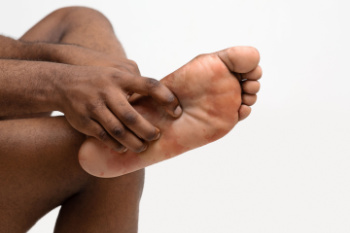
Plantar fasciitis, the leading cause of heel pain, stems from inflammation or degeneration of the plantar fascia attaching to the heel. This thick tissue band, essential for foot support, manifests as pain under the heel, often extending into the arch. Symptoms of plantar fasciitis peak in the morning, but often subside as the foot warms throughout the day. Overuse is a key factor of plantar fasciitis, but risks heighten with poor foot biomechanics and other factors. These may include overpronation, a high-arched foot, and improper footwear choice. Additional contributors include excess weight, tight calf muscles, and plantar fascia tightness. Among the symptoms are morning heel pain, arch discomfort, and tenderness when pressing the heel. Distinguishing plantar fasciitis from similar conditions, such as a bruised heel, heel spur, or stress fracture aids in an accurate diagnosis. Treatment involves pain and inflammation reduction, biomechanical correction, and targeted exercises. For a tailored approach to managing plantar fasciitis, it is suggested that you consult a podiatrist for a full exam and suggested treatment. options.
Plantar fasciitis is a common foot condition that is often caused by a strain injury. If you are experiencing heel pain or symptoms of plantar fasciitis, contact the foot specialists from Certified Foot Care. Our doctors can provide the care you need to keep you pain-free and on your feet.
What Is Plantar Fasciitis?
Plantar fasciitis is one of the most common causes of heel pain. The plantar fascia is a ligament that connects your heel to the front of your foot. When this ligament becomes inflamed, plantar fasciitis is the result. If you have plantar fasciitis you will have a stabbing pain that usually occurs with your first steps in the morning. As the day progresses and you walk around more, this pain will start to disappear, but it will return after long periods of standing or sitting.
What Causes Plantar Fasciitis?
- Excessive running
- Having high arches in your feet
- Other foot issues such as flat feet
- Pregnancy (due to the sudden weight gain)
- Being on your feet very often
There are some risk factors that may make you more likely to develop plantar fasciitis compared to others. The condition most commonly affects adults between the ages of 40 and 60. It also tends to affect people who are obese because the extra pounds result in extra stress being placed on the plantar fascia.
Prevention
- Take good care of your feet – Wear shoes that have good arch support and heel cushioning.
- Maintain a healthy weight
- If you are a runner, alternate running with other sports that won’t cause heel pain
There are a variety of treatment options available for plantar fasciitis along with the pain that accompanies it. Additionally, physical therapy is a very important component in the treatment process. It is important that you meet with your podiatrist to determine which treatment option is best for you.
If you have any questions, please feel free to contact our offices located in Larchmont and Brooklyn, NY . We offer the newest diagnostic and treatment technologies for all your foot care needs.
Diagnosis and Management of Flat Feet
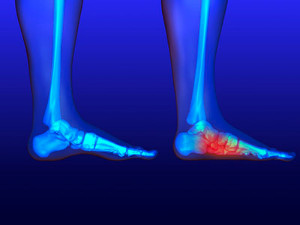
Pes planus, commonly known as flat foot, is a condition where the arch of the foot is lower or in contact with the ground when compared to the typical foot structure. It is important to note that infants are born with flexible flat feet. Arch development usually begins at approximately 3 years of age, and reaches adult levels in arch height between 7 and 10 years old. Flexible flat feet can be developmental in infants and toddlers but may be considered true flat feet by age 8 to 10. On the other hand, rigid flat feet are associated with underlying pathology and lack the longitudinal arches both in heel elevation and weight bearing. Acquired flat feet can develop from various factors, particularly diabetes, which can affect the structure and functionality of the feet. Additionally, foot and ankle injuries can lead to the development of flat feet. Certain medical conditions, including arthritis, spina bifida, cerebral palsy, and muscular dystrophy, are also associated with acquired pes planus. Interestingly, pregnancy can be a factor in the development of flat feet due to the changes that occur in the body during this period. Regardless of the reason for your flat feet, if they are causing you problems, it is suggested that you schedule an appointment with a podiatrist who can help you to find relief.
Flatfoot is a condition many people suffer from. If you have flat feet, contact the foot specialists from Certified Foot Care. Our doctors will treat your foot and ankle needs.
What Are Flat Feet?
Flatfoot is a condition in which the arch of the foot is depressed and the sole of the foot is almost completely in contact with the ground. About 20-30% of the population generally has flat feet because their arches never formed during growth.
Conditions & Problems:
Having flat feet makes it difficult to run or walk because of the stress placed on the ankles.
Alignment – The general alignment of your legs can be disrupted, because the ankles move inward which can cause major discomfort.
Knees – If you have complications with your knees, flat feet can be a contributor to arthritis in that area.
Symptoms
- Pain around the heel or arch area
- Trouble standing on the tip toe
- Swelling around the inside of the ankle
- Flat look to one or both feet
- Having your shoes feel uneven when worn
Treatment
If you are experiencing pain and stress on the foot you may weaken the posterior tibial tendon, which runs around the inside of the ankle.
If you have any questions please feel free to contact our offices located in Larchmont and Brooklyn, NY . We offer the newest diagnostic and treatment technologies for all your foot and ankle needs.
Defining Foot Blisters and Their Origins
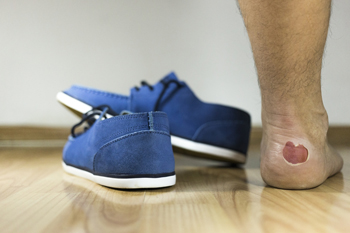
Foot blisters are defined as fluid-filled sacs that form on the skin, and are often encountered during daily activities or as a result of wearing ill-fitting footwear. They develop as a result of friction or repeated rubbing, which separates the layers of skin, creating a pocket of clear fluid. Several factors can contribute to the formation of foot blisters. Tight or improperly fitting shoes can lead to excessive rubbing, especially while walking or running. Moisture, such as sweat or wet conditions, softens the skin and makes it more prone to blistering. Certain materials consisting of rough socks or shoes, can exacerbate the problem. Additionally, activities that place excessive stress on the feet, like hiking or long-distance running, are common culprits. Understanding the definition and causes of foot blisters can help you take preventive measures. If you have blisters on your feet, it is suggested that you contact a podiatrist who can safely treat them and guide you on blister-prevention tactics.
Blisters may appear as a single bubble or in a cluster. They can cause a lot of pain and may be filled with pus, blood, or watery serum. If your feet are hurting, contact the foot specialists of Certified Foot Care. Our doctors can provide the care you need to keep you pain-free and on your feet.
Foot Blisters
Foot blisters are often the result of friction. This happens due to the constant rubbing from shoes, which can lead to pain.
What Are Foot Blisters?
A foot blister is a small fluid-filled pocket that forms on the upper-most layer of the skin. Blisters are filled with clear fluid and can lead to blood drainage or pus if the area becomes infected.
Symptoms
(Blister symptoms may vary depending on what is causing them)
- Bubble of skin filled with fluid
- Redness
- Moderate to severe pain
- Itching
Prevention & Treatment
In order to prevent blisters, you should be sure to wear comfortable shoes with socks that cushion your feet and absorb sweat. Breaking a blister open may increase your chances of developing an infection. However, if your blister breaks, you should wash the area with soap and water immediately and then apply a bandage to the affected area. If your blisters cause severe pain it is important that you call your podiatrist right away.
If you have any questions, please feel free to contact our offices located in Larchmont and Brooklyn, NY . We offer the newest diagnostic and treatment technologies for all your foot care needs.
Are You Suffering From Ingrown Toenails?
Podiatric Care For Morton’s Neuroma
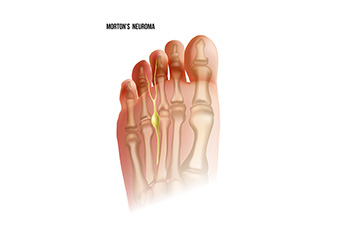
Morton's neuroma is a condition that affects the forefoot. Despite its name, it is not a true neuroma but rather a result of nerve fibrosis. This fibrosis occurs due to pressure or repetitive irritation, resulting in the thickening of the digital nerve, typically found in the third or second intermetatarsal space. Managing Morton's neuroma involves various treatment options. Orthotics, which are custom-made shoe inserts, can provide relief by altering foot mechanics and reducing pressure on the affected nerve. Steroid injections can also be administered to alleviate inflammation and pain. In more severe cases, surgical excision may be necessary, typically performed through a dorsal approach. Successful management of Morton's neuroma relies on several critical factors. If you feel you have Morton’s neuroma, it is suggested that you schedule an appointment with a podiatrist. A thorough examination is essential to accurately diagnose and treat this condition.
Morton’s neuroma is a very uncomfortable condition to live with. If you think you have Morton’s neuroma, contact the foot specialists of Certified Foot Care. Our doctors will attend to all of your foot care needs and answer any of your related questions.
Morton’s Neuroma
Morton's neuroma is a painful foot condition that commonly affects the areas between the second and third or third and fourth toe, although other areas of the foot are also susceptible. Morton’s neuroma is caused by an inflamed nerve in the foot that is being squeezed and aggravated by surrounding bones.
What Increases the Chances of Having Morton’s Neuroma?
- Ill-fitting high heels or shoes that add pressure to the toe or foot
- Jogging, running or any sport that involves constant impact to the foot
- Flat feet, bunions, and any other foot deformities
Morton’s neuroma is a very treatable condition. Orthotics and shoe inserts can often be used to alleviate the pain on the forefront of the feet. In more severe cases, corticosteroids can also be prescribed. In order to figure out the best treatment for your neuroma, it’s recommended to seek the care of a podiatrist who can diagnose your condition and provide different treatment options.
If you have any questions, please feel free to contact our offices located in Larchmont and Brooklyn, NY . We offer the newest diagnostic and treatment technologies for all your foot care needs.
Effective Strategies for Preventing Running Injuries
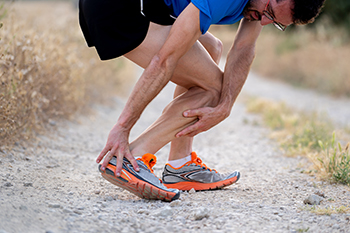
Running, a dynamic and invigorating exercise, offers a multitude of physical benefits. However, the repetitive impact of this activity can also lead to potential injuries if not approached with caution. Prevention of running injuries becomes paramount, and a holistic strategy is key to ensuring runners can continue to enjoy their passion without setbacks. Consistent warm-up routines, including dynamic stretches, prepare muscles and joints for the demands of running, reducing the risk of strains. Wearing appropriate footwear that provides ample support and cushioning is essential in maintaining optimal biomechanics during each stride. Gradual progression in training intensity and distance allows the body to adapt, minimizing the risk of overuse injuries. Incorporating cross training activities and strength exercises helps balance muscle development and enhances overall endurance. Active recovery, including stretching and cool-down exercises, is equally vital in preventing stiffness and promoting flexibility. If you have sustained an injury from running, it is suggested that you schedule an appointment with a podiatrist.
All runners should take extra precaution when trying to avoid injury. If you have any concerns about your feet, contact the foot specialists of Certified Foot Care. Our doctors will treat your foot and ankle needs.
How to Prevent Running Injuries
There are a lot of mistakes a runner can make prior to a workout that can induce injury. A lot of athletes tend to overstretch before running, instead of saving those workouts for a post-run routine. Deep lunges and hand-to-toe hamstring pulls should be performed after a workout instead of during a warmup. Another common mistake is jumping into an intense routine before your body is physically prepared for it. You should try to ease your way into long-distance running instead of forcing yourself to rush into it.
More Tips for Preventing Injury
- Incorporate Strength Training into Workouts - This will help improve the body’s overall athleticism
- Improve and Maintain Your Flexibility – Stretching everyday will help improve overall performance
- “Warm Up” Before Running and “Cool Down” Afterward – A warm up of 5-10 minutes helps get rid of lactic acid in the muscles and prevents delayed muscle soreness
- Cross-Training is Crucial
- Wear Proper Running Shoes
- Have a Formal Gait Analysis – Poor biomechanics can easily cause injury
If you have any questions, please feel free to contact our offices located in Larchmont and Brooklyn, NY . We offer the newest diagnostic and treatment technologies for all your foot care needs.

